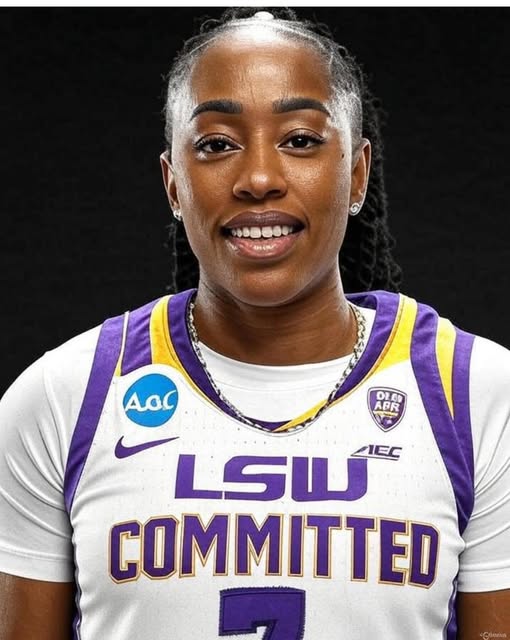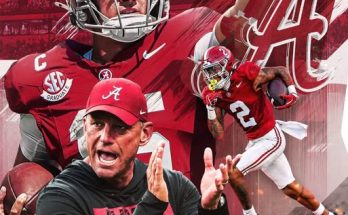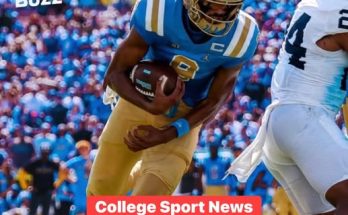In an announcement that shook the collegiate basketball landscape, Joyce Edwards—fresh off earning SEC Freshman of the Year honors, guiding South Carolina deep into March Madness, and establishing herself as one of the nation’s most promising talents—has stunned fans and analysts alike by committing to LSU for the upcoming season. The transfer, revealed via Edwards’s minimalist Instagram story late last night, confirms what few saw coming: the 19-year-old phenom is swapping the powerhouse Gamecocks for the Tigers in Baton Rouge. While the headlines will focus on the seismic shift in roster dynamics, insiders point to three lesser-known, deeply personal motivations behind Edwards’s heartfelt decision—motivations that speak volumes about her character, ambition, and journey.
From the moment Edwards stepped onto the national stage as a McDonald’s All-American and Gatorade National Player of the Year, she was shoehorned into the familiar narrative: A South Carolina lifer, molded by Dawn Staley’s championship pedigree, and poised to become the next Aliyah Boston or A’ja Wilson. Her freshman season under Coach Staley more than validated the hype: a dynamic forward averaging 12.7 points per game, with an imposing blend of size, IQ, and grace that made her SEC Freshman of the Week multiple times and a fixture in the All-SEC conversation. Her growth was relentless. Yet even as she led the team internally in scoring and anchored their tourney surge, deeper forces stirred behind the scenes.
Off the court, Edwards—already known for her brilliance in the classroom and her broad athletic prowess—felt a yearning for reinvention. She began to view her time at South Carolina not as the last chapter, but as a prologue. In private conversations with close friends and family, she spoke of an itch to test herself in new environments, to challenge the boundaries of her own narrative. And when LSU’s head coach, Kim Mulkey, offered her a vision of leadership—of stepping into a transformative role at a program that had just claimed its first national title and was now undergoing a generational reshaping—Edwards listened. The combination of renewed autonomy and the chance to shape history in Baton Rouge proved irresistible.
But change of scene is only part of the story—it’s also about people. Behind the scenes, three undisclosed reasons emerged—each more compelling than the last—and today they offer a powerful glimpse into what truly guided Edwards’s stunning departure.
Reason One: A Critical Academic Pivot
What most fans never saw is that Edwards arrived at South Carolina with a keen interest in an environmental engineering track—an unconventional choice for a student-athlete of her caliber. Reports confirm that Staley, in a rare cross-departmental initiative, worked with university officials to create a bespoke honors path just for her, aligned with Edwards’s interests. Yet midway through this year, after taking advanced seminars and interning with a state environmental agency, Edwards discovered that her passion lay closer to coastal restoration and marine biology—a specialty LSU offered in its College of the Coast & Environment. Deeply committed to making real-world impact beyond the hardwood, she quietly indicated that the lack of that specific coastal focus at South Carolina weighed heavily on her. Coaches, friends, and mentors close to the program confirmed that while athletics had drawn her in, her academic ambitions ultimately pulled her to Baton Rouge.
Reason Two: Entering the Limelight—on Her Own Terms
By February, braces-adjacent footage of Edwards launching 3s, powering to the rim, and disrupting passing lanes had gone viral on social media and racked up countless highlight reels. Though her on-court heroics made her an instant star, she felt pressure within the deep bench rotation at South Carolina—where Staley’s depth-first philosophy meant minutes were earned, not given. At LSU, Mulkey painted a different picture: a central role, a team retooled around her, and a marketing push to raise her brand nationally—perhaps as the next face of women’s basketball. Sources inside both programs say that Edwards had reached a crossroads between being one of many elite talents in a loaded South Carolina roster or becoming the signature star in Baton Rouge. For a young woman determined to control her own narrative, that opportunity was too rare to ignore.
Reason Three: A Family Tie Through the Bayou
Few know that Edwards’s paternal grandmother, originally from Iberia Parish, Louisiana, moved to Camden in the 1970s, raising Joyce’s father before he headed north for college. Grandma Edwards—now 85—holds lifelong memories of the bayou, Creole cooking, and the LSU Tigers on gameday. In recent phone calls with Joyce, she shared stories about the early fanfare and family pride sparked by the bayou’s first national championship in women’s hoops. More than once, she urged Joyce to return to “her roots,” not just geographically but spiritually, to honor a heritage long anchored in Louisiana soil. According to family confidants, Joyce’s decision wasn’t just strategic—it was deeply personal, shaped by letters and old photo albums passed through generations. Edwards herself has since told close friends that playing on the purple-and-gold floor in front of her grandmother, surrounded by faith, family, and the echoes of bayou chants, felt like coming home.
Taken together, these three factors—academic alignment, starring opportunity, and ancestral calling—form a trio of motivations powerful enough to eclipse any athletic allegiances. Edwards’s move also sends shockwaves through both conferences. South Carolina loses not just an elite freshman, but a rapidly ascending cornerstone; LSU, meanwhile, gains a generational athlete entering her prime, with blueprint for national star status.
How this impacts both teams is already under intense analysis. At South Carolina, whispers suggest Staley’s recruiting pipeline is preparing for depth injections, and whispers are spreading that a wave of young talent could follow Edwards out the door. Meanwhile, LSU fans are in a near frenzy. Mulkey has already cleared a starting frontcourt spot, restructured foreign tour chances to showcase Edwards, and scheduled appearances to introduce her to the Baton Rouge community. One Tigers insider described the mood as “electric,” framing Edwards’s arrival not as a transfer but a turning point for the program.
Nationally, the move reshapes the transfer landscape. Once considered the gold standard, USC’s program may now have to contend with its first taste of a high-profile defection under Staley. The signal sent is clear: even blue-blood programs are vulnerable to personal motivations outside of basketball. The ripple effect could spur more recruits to weigh academic, emotional, and family factors before locking in decisions.
Phil Knight‑funded analytics firms—whose work on intangible team cohesion drove Edwards to cite “culture fit”—are now projecting that LSU women’s team will skyrocket into national title contention again, with Edwards as a vital fulcrum. The NCAA bracketology world is abuzz: can a baby-faced freshman who moved four states away tip the scale for championship runs? ESPN conference insiders believe LSU’s frontcourt versatility and Edwards’s defensive switchability could make the Tigers the season’s most dangerous dark horse.
Amid all the speculation, Edwards herself remains unwavering. In her social media post announcing the transfer, she wrote: “This move is about growth—on and off the court. Thank you Columbia for the memories; next stop, Baton Rouge—let’s get to work.” No mention of dollar figures, NIL deals, or drama—just a message rooted in personal advancement. Given her academic bent and familial devotion, most insiders believe that Edwards meant every word she said.
Still, speculation continues. Some wonder whether Commissioner Lee Elder’s newly unveiled NCAA academic transfer policy sparked behind-the-scenes negotiation—an “academic transfer exception” that allowed athletes transferring for non‑athletic majors to avoid assuming a degree‑completion penalty. Others suggest that Edwards’s newfound platform—and LSU’s Houston media market—could herald an unprecedented personal branding element to her move.
But for Edwards, the storyline is already written. Whether she dons purple and gold or dominates in coastal science labs, her voice—the voice of a scholar‑athlete shaping her future according to her own unique compass—can’t be ignored.
One final note: this isn’t a farewell to South Carolina; Edwards made sure to thank Staley publicly for “everything you taught me… you built me.” If history is any guide, she may return someday—either professionally or as a mentor to the next generation. But for now, the basketball world turns its attention to Baton Rouge, where a freshman with Charleston grit, engineering dreams, and Louisiana roots is ready to build her own legacy.
In sum: Joyce Edwards’s LSU commitment isn’t just another transfer—it’s a seismic event driven by architecture of her own design: a perfect academic fit, a starring athletic trajectory, and the pull of ancestral heritage. As the next season draws near, college basketball fans will watch not just a talented transfer, but a story still unfolding—seeded in roots, nurtured by intellect, and set to bloom on purple-and-gold courts.



